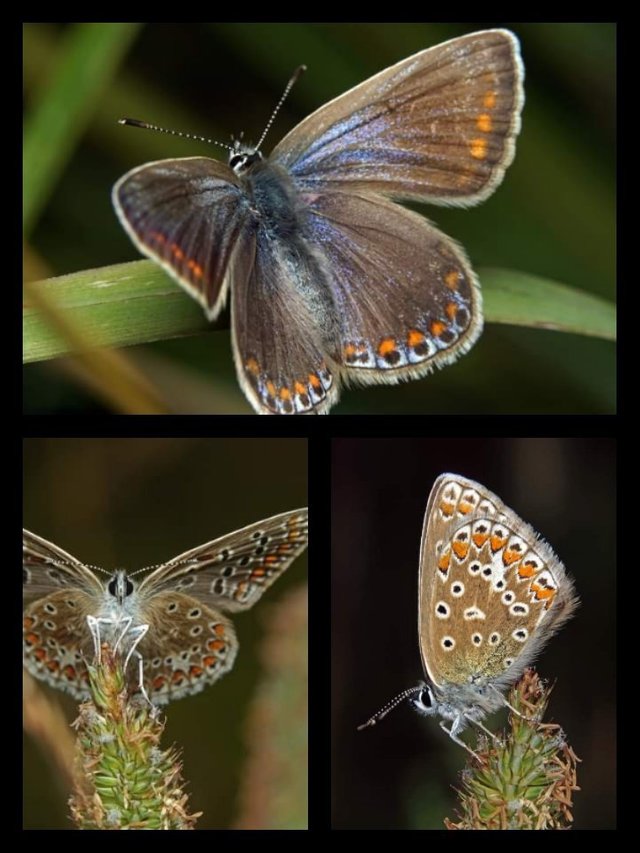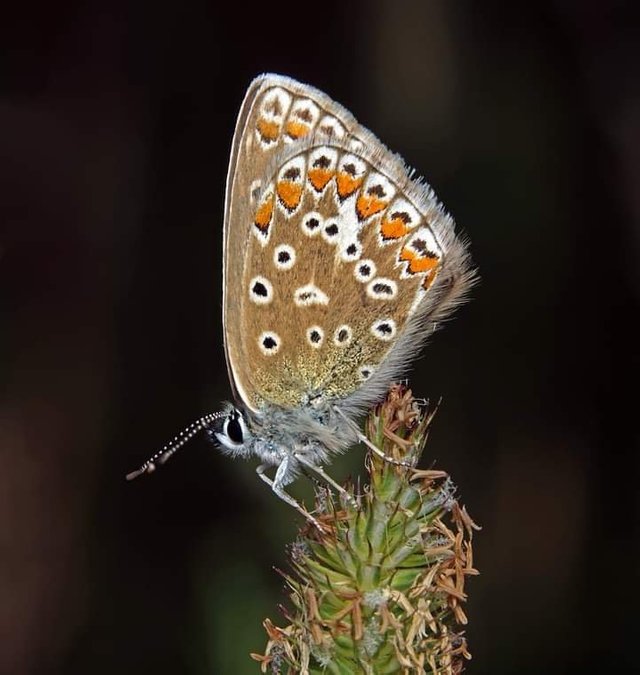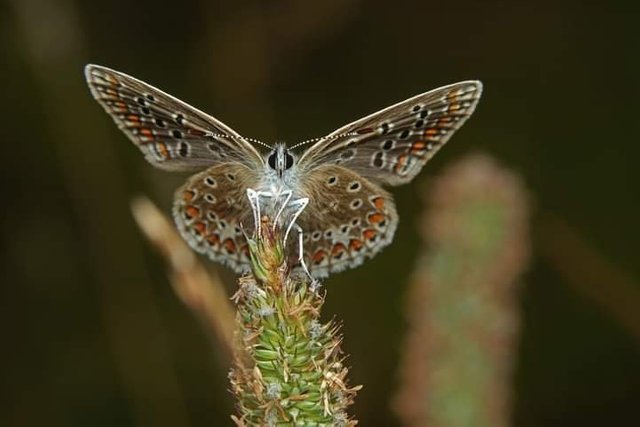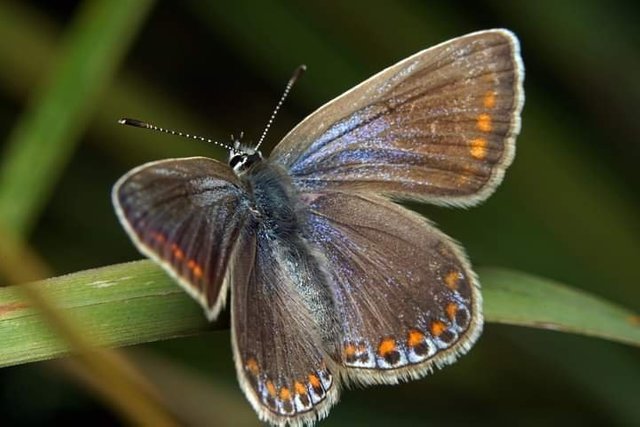The common blue butterfly (Polyommatus icarus) belongs to the Lycaenidae family and the Polyommatinae subfamily. The butterfly is found throughout the Palearctic. The Polyomathinae family of butterflies are called blues because of the color of their wings. Males with blue wings with dark brown borders and white edges are called common blues. Females are usually brown with blue dust and orange spots. Polyommatus icarus has a wingspan of 28–36 mm (1.1–1.4 in). The back of the wings is an iridescent lilac-blue, bright violet-blue, or almost hyacinth blue, with a fine black line. Females have brown or dark brown feathers with reddish-yellow spots (marginal spots) around the edges and usually some blue in the middle. The amount of blue and brown varies depending on where you are. The upper feathers of females may be mostly blue, especially in Ireland and Scotland, but always have red spots. Males have a greyish or dusty gray base color on the ventral side, while females are more brownish. A series of red or orange spots runs along the dorsal margin and extends to the forehead in both sexes, although they are usually absent. Fainting occurs, especially in males, where they sometimes disappear entirely. On the hind wing, there are about a dozen black-centered white spots (ocelli) and nine on the forewing. In Chapman's and Escher's Blues, there is usually one in the center of the front cell, which is absent in Chapman's and Escher's Blues. Unlike chalky and Adonis blues, the outer edge of the wings is uniformly white and does not have dark streaks (ie, the common blue lacks the checkering). The caterpillar is small, light green with yellow stripes, and very thin, as is typical of Lycaenid larvae. Europe, North Africa, the Canary Islands, and ranges from northern China to the Palearctic are all home to the common blue butterfly. It was recently discovered in Quebec, That's important in english ilsese. Since 1970, its distribution pattern has decreased by 15%. The common blue is the most common and widespread blue in Great Britain and Ireland (and possibly Europe). It can be found throughout the north of Orkney as well as the majority of the Outer Hebrides. Grasslands, coastal dunes, forest clearings, and many man-made environments are among the grasslands where their food plants can be found. This species was recently introduced into eastern Canada. Ara Sarafian, an amateur biologist who studied the butterfly from 2005 to 2008, discovered it in Mirabel, Quebec, Canada. The butterfly was known as Polyommatus icarus, a newly introduced butterfly to Canada and North America, when it contacted the Canadian National Collection of Insects in Ottawa.




Common blues take flavonoids from their host plants and store them in their feathers as UV-absorbing pigments. Females have flavonoid pigments that attract males. When searching for virgin females, males patrolling suitable environments stop and inspect the female for flavonoid pigments. This may be due to the fact that UV-absorbing flavonoid pigments increase color saturation in females, making them stand out more. Other benefits of isolating flavonoids include protection of eggs from harmful UV chemical reactions, as butterflies will absorb UV rays and flavonoids will provide chemical defenses.
Upvoted! Thank you for supporting witness @jswit.
Downvoting a post can decrease pending rewards and make it less visible. Common reasons:
Submit
Thank you very much for your beautiful post and photos!
Unique-79% Please, you need to make your posts more original.
#club75
Downvoting a post can decrease pending rewards and make it less visible. Common reasons:
Submit